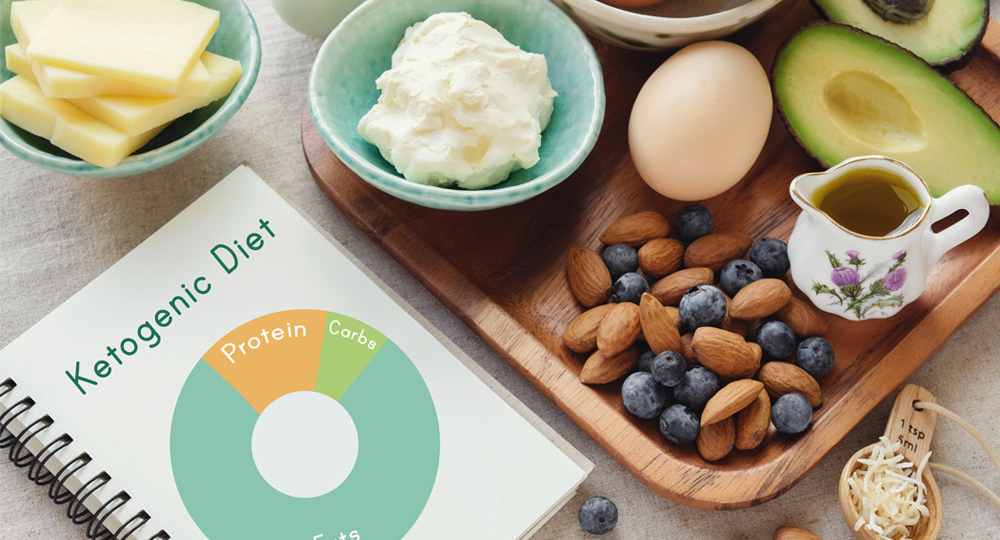
Looking to lose weight, eat clean, get better sleep, lower your risk for heart disease or just feel better? With so many diets and eating plans out in the world, it can be difficult to know which one is right for you. We’ve broken 5 popular diets down to the basics, including supposed benefits, what you can’t eat and (more importantly) what you can. We’ve also included a few yummy recipes for each. Most of the diets here are ones you can stick to and make part of a healthy lifestyle (i.e. not just two weeks of eating rice cakes and tissue paper). There are, however, one or two that you might be able to use short-term to jumpstart your fat-burning engine. Whichever one you decide, please note it’s important to talk to your doc before starting a new food or exercise plan. And um, just kidding about the rice cakes and tissue paper thing. Don’t do that.
1. TIM FERRISS’ SLOW CARB DIET
Tim Ferriss a.k.a the “Silicon Valley Superman” and “4-Hour Guru” is an author, speaker, podcaster and adventurously curious guy who seeks to obtain maximum results with minimum effort. (He once learned how to play the drums in 5 days before playing on stage with Foreigner.) His books include Tribe of Mentors, Tools of Titans, 4-Hour Workweek, 4-Hour Chef and the 4-Hour Body, where (among other interesting things) he teaches how to lose 20 pounds in 30 days without exercise. If your head just spun around, check out the details below to see if this is something you’d be interesting in trying.
Supposed Benefits
- Lose 20 pounds of fat in 30 days – yowza!
The Rules
- No white foods – except for innocent cauliflower.
- Each meal should be made up of veggies, lean protein and legumes.
- Your first meal needs to have 30g of protein and you should eat it within 1 hour of waking up.
- Eat meals 4 hours apart – no snacking.
- Eat the same meals over and over – pick 2 or 4 meals and put them on repeat. (Switching things up makes things complicated, which can lead you to jump ship.)
- Take one day off a week to get wild. Stuff yourself with pizza, donuts, queso, ice cream, fried chicken—go nuts. (And eat a bunch of nuts if you want.)
What You CAN’T Eat & Drink:
- White foods – bread, white rice (and brown), cereal, potatoes, pasta, tortillas or fried food with breading. “Don’t eat white stuff unless you want to get fatter.” Well okay then.
- Sugar
- Fruit – tomatoes & avocados are okay in moderation
- Juice
- Milk or soy milk
- Regular soda – limit diet sodas to no more than 16 oz. a day. “Aspartame can stimulate weight gain.” Bummer.
What You CAN Eat & Drink:
- Lean protein – egg whites, eggs, chicken, beef (preferably grass-fed), pork and fish
- Legumes – lentils, black beans, pinto beans, red beans, soybeans
- Veggies – spinach, broccoli, cauliflower, sauerkraut, kimchi, asparagus, peas, green beans
- Unsweetened tea
- Unsweetened coffee – you can add up to 2 tablespoons of cream, but Tim suggests just a dash of cinnamon.
- Water – tons of it.
Is Alcohol Allowed?
Yep. You can drink 1-2 glasses of wine a night. He suggests dry red wine, but you can also do a dry white.
Meal Ideas
- Breakfast
- Scrambled egg whites with one whole egg, black beans and mixed vegetables
- 30g protein shake – (Though Tim prefers you keep it real with real food.)
- Lunch
- Roasted chicken with mixed veggies and beans
- Grass-fed organic beef, pinto beans, mixed vegetables, extra guacamole
- Dinner
- Grass-fed organic beef, lentils and mixed vegetables
- Store-bought rotisserie chicken with veggies and beans
Helpful Articles
- How to Lose 20 lbs. of Fat in 30 Days… Without Doing Any Exercise
- 4-Hour Body – The Slow-Carb Diet
- Everything You Need to Know About the Slow-Carb Diet™
2. KETO DIET
This is a high fat, moderate protein and extremely low carb diet. It’s all about limiting your net carb intake (total carbs – dietary fiber = net carbs) to under 50 grams per day—or if you really want to see a change—under 20. Your body will within 2-3 days go into Ketosis and start burning fat instead of carbs, resulting in fast weight loss. When you reach your goal weight, you can increase your net carb intake to 20-50 or 50-100.
Supposed Benefits
- Weight loss
- Improved skin
- Diabetes management and prevention
- Increased energy
- Mental focus
The Rules
- Limit your net carbs to 20 grams a day, or under 50 if you want to ease into the diet.
- Avoid most carbohydrates like sugar, processed junk food, bread, pasta and rice.
- Replace them with meat, fish, eggs, vegetables and natural fats like butter and olive oil.
- 70-80% of your daily calories should come from healthy fats like oils and nuts, 15-20% from protein and 5% from net carbs.
What You CAN’T Eat & Drink:
- Grains – cereal, wheat, corn, rice, oats
- Sugar – soda, candy, honey, juice, sports drinks, chocolate, cake, ice cream
- Starches – bread, pasta, rice, potatoes, sweet potatoes, whole grain products
- Most fruit – apples, bananas, oranges
What You CAN Eat & Drink:
- Protein – Lean beef, fish, chicken, eggs (try to go organic)
- Vegetables that grow above ground (especially leafy greens)
- Natural fats like oils and butter
- Coffee
- Tea
- Low carb sweeteners like Stevia
- High-fat dairy like yogurt, cream and cheese
- Some fruit – avocados, blueberries, raspberries, blackberries
- Nuts and seeds, but don’t go crazy.
Is Alcohol Allowed?
Yes and no. You can’t drink liquor or beer, but you can have a glass of wine occasionally. They do caution it might slow down weight loss though.
Recipes
Helpful Articles
- Complete Beginner’s Guide to the Ketogenic Diet
- I went on the Silicon Valley diet craze that encourages butter and bacon for 2 months — and it vastly improved my life
- A Comprehensive Beginner’s Guide to the Ketogenic Diet
- A Keto Diet for Beginners
- Keto Diet
3. MEDITERRANEAN DIET
This diet is based on the eating habits and lifestyles of those who (shocker!) live in the Mediterranean. Meals are rich in fresh vegetables, fruit, fish, whole grains, healthy oils and nuts, and they’re meant to be enjoyed with friends and usually a glass or two of red wine. This is more of a realistic and longterm way of eating so it’s easier to adopt and stick to, compared to the strict diets mentioned above.
Supposed Benefits
- Weight loss
- Decreased risk of prostate, breast and other cancers, heart and kidney disease, depression and dementia
- Diabetes prevention and control
- A longer life
The Rules
- Be active – work out on a regular basis.
- Enjoy meals with others.
- Base meals on fruits, vegetables, whole grains, olive oil, beans, nuts, legumes, seeds, herbs and spices.
- Eat fish and seafood often – at least two times a week.
- Eat red meat and sweets less often.
- Eat chicken, cheese, yogurt in moderation.
- Replace butter with healthy fats like olive oil.
- Use herbs and spices for flavor instead of reaching for the salt.
What You CAN’T Eat & Drink:
- White bread
- White pasta
- Processed meat and other processed foods
- Refined grains and oils
- Butter, vegetable or coconut oil
- Sugary desserts
- Sugar
- Soda
- Lots of red meat
What You CAN You Eat & Drink:
- Fish and seafood – tuna, salmon, oysters
- Fruit
- Legumes – chickpeas, cannellini beans, lentils
- Healthy fats like olive oil and nuts.
- Whole grains – brown rice, quinoa, faro, bulgar, whole grain bread
- Dairy – feta, goat cheese, Greek yogurt – in moderation
- Chicken – in moderation
- Eggs – in moderation
- Red meat – though limit it to no more than a few times a month.
Is Alcohol Allowed?
Yes. You can get your red wine on, but don’t go overboard.
Recipes
Helpful Articles
- Mediterranean Diet: A Heart-Healthy Eating Plan
- What Can You Eat On the Mediterranean Diet?
- 8 Ways to Follow the Mediterranean Diet for Better Health
- Mediterranean Diet 101: A Meal Plan and Beginner’s Guide
- The Mediterranean Diet
4. DASH DIET
U.S. News & World Report has ranked the DASH Diet #1 on their Best Diets Overall List for 8 years in a row. That’s quite the trophy. It was originally created to help lower high blood pressure without the need for medication, but it’s also been known to help people lose weight. It gets points for being an easy-to-follow and flexible eating plan full of fruits, vegetables, low or nonfat dairy, whole grains, lean meats, fish, chicken, nuts and beans. You basically eat all of the things you’ve heard you’re supposed to and way less (if any) of the stuff you’ve been told to stay away from. We give the scoop on the Dash Weight Loss Plan below, but there are also Original and Vegetarian Younger You plans.
Supposed Benefits
- Weight loss
- Prevents and lowers high blood pressure
- Reduced risk of cancer, stroke, heart disease, heart failure, kidney stones and diabetes
The Rules
- Eat fruits, vegetables, low or nonfat dairy, mostly whole grains, lean meats, fish, chicken, nuts and beans.
- Go easy on the salt. Keep sodium intake down to less than 2,300 mg a day, then ease into lowering it even more to 1500 mg per day.
- Eat 2 or more meat-free meals every week.
- Get regular exercise.
What You CAN’T Eat & Drink:
- Saturated fat
- Sugary beverages like soda
- Full-fat dairy
- Candy and cookies
- Chips
- Salted nuts
- Pastries
- Pizza
- Soups and sauces
- Salad dressings
- Cheese
- Lunch meat
- Bread
What You CAN Eat & Drink:
- Fruits
- Vegetables
- Whole grains
- Lean protein
- Low-fat dairy
Is Alcohol Allowed?
Yes, but keep it to a minimum—one drink per day for women, two for men.
Recipes
Helpful Articles
- The Complete Beginner’s Guide to the DASH Diet
- DASH Diet Recipes
- 7-Day DASH Diet Meal Plan
- The DASH Diet
5. WHOLE30
In a nutshell (yes, you can eat nuts), the Whole30 is a 30-day reset where you replace sugar, grains, legumes, dairy and alcohol with whole foods like vegetables, fruit, meat and seafood. Melissa Hartwig, a Certified Sports Nutritionist, co-created the program and swears the 30 days of detoxing your body and mind will change your life. This is a bit of a tough and restrictive diet, so we suggest doing it with a friend and/or following the Whole30 on Facebook, Twitter and Instagram for support.
Supposed Benefits
- Replace old, bad habits with good ones you’ll stick to when the 30 days is up.
- Improved skin, energy and sleep
- Lower high blood pressure and cholesterol
- Combats asthma, digestive issues skin conditions, allergies, infertility, migraines, depression, heartburn, fibromyalgia, chronic fatigue, Crohn’s, IBS and Celiac disease
- Learn how to cook!
- Better relationship with food
- Lose weight
The Rules
- Replace sugar, grains, legumes, dairy and alcohol with whole foods like vegetables, fruit, meat and seafood.
- Just say no to alcohol.
- Don’t weigh yourself during the entire 30 days.
- Don’t do this just to lose weight. This diet is more about detoxing your body and eliminating bad habits, though you’ll probably lose a bit of weight.
- Don’t attempt to create Whole30-approved replacements for your vices like cake, pizza or booze.
What You CAN’T Eat & Drink:
- Added sugar – maple syrup, honey, agave syrup
- Grains – wheat, rye, barley, oats, corn, rice, cereal
- Dairy – milk, cheese, yogurt, ice cream
- Quinoa
- Hummus
- Legumes – beans, peas, chickpeas, lentils, peanuts
- Soy – edamame, tofu, soy or miso
- Cookies and cakes
- Processed foods
- Soda
What You CAN Eat & Drink:
- Vegetables – potatoes too!
- Fruit – in moderation
- Fish
- Unprocessed meat
- Eggs
- Nuts and seeds – in moderation and no peanuts
- Oils – olive, coconut and ghee
- Coffee
- Unsweetened tea
Is Alcohol Allowed?
Nope. Whole30 veterans suggest you stock the fridge with LaCroix, Perrier and Topo Chico.
Recipes
- Sweet Potato, Kale and Shrimp Skillet
- Jalapeno Turkey Burgers
- Roasted Lemon Chicken with Potatoes and Rosemary
Helpful Articles
- How to Survive Whole 30
- What You Can and Can’t Eat on Whole30
- I Tried Whole30, And Here’s How It Went.
- Whole30 Downloads
Looking for more inspiration for eating healthier this year? Read our 6 Healthy Cookbooks post and shop more of our favorites below!
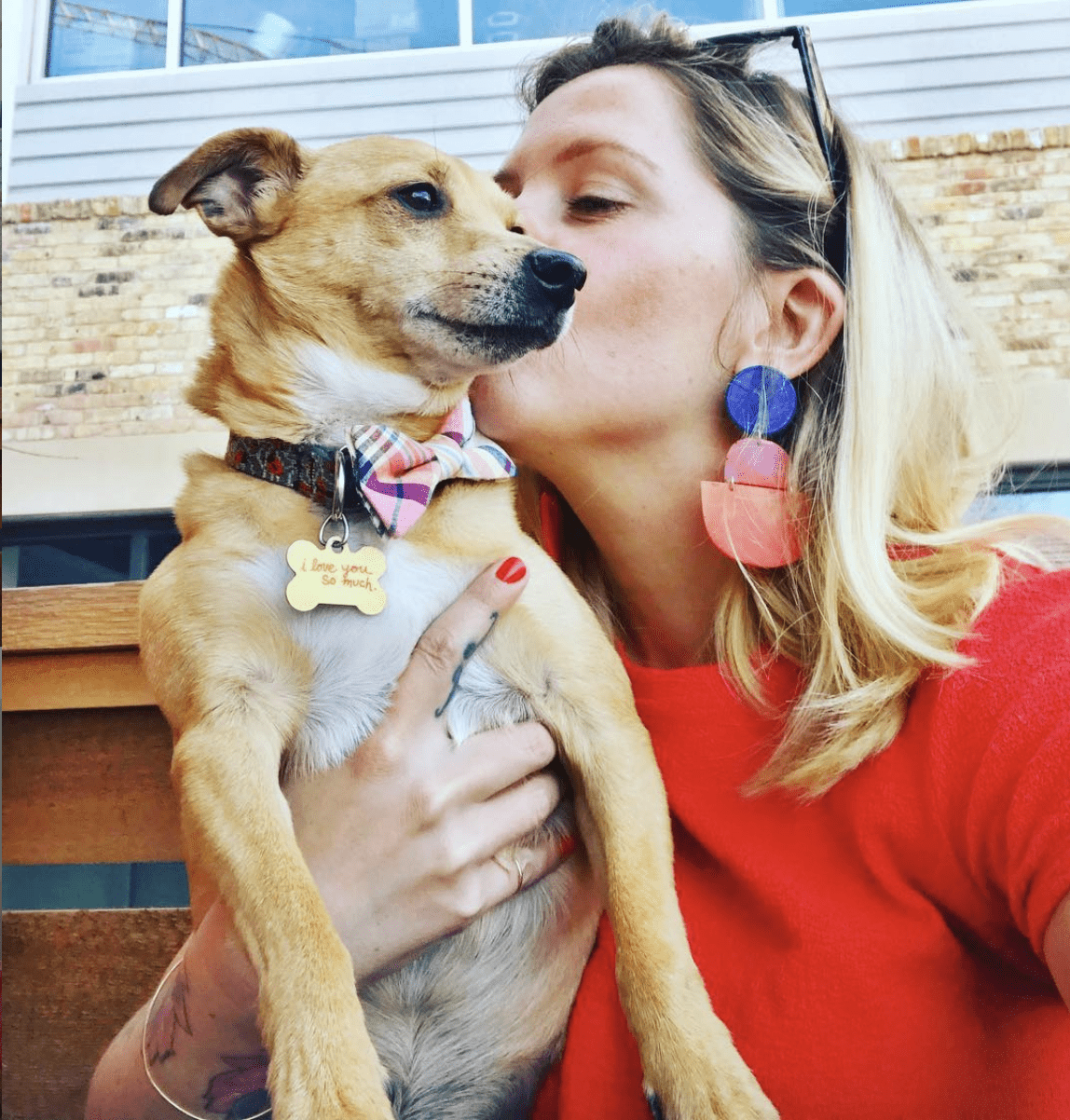
Melody Rose Rowan is the CEO + hostess with the mostess at @CuteStays. When she isn’t blogging about style and interior design for her blog MustacheMelrose.com, Melody can be found renovating @MaxineTheAirstream with her husband, Scott, or playing with her two rescue dog-sons, Jake and Finn. Say hi at @mustachemelrose!


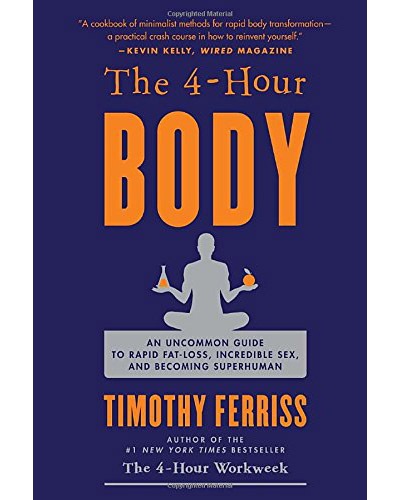
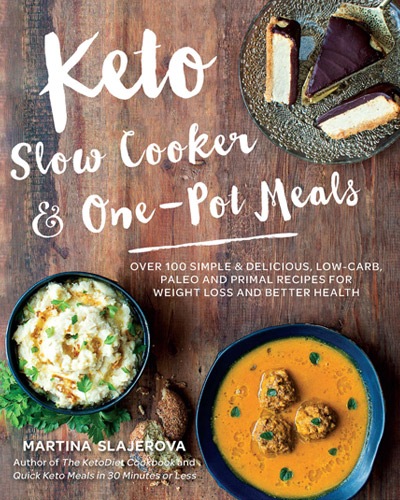
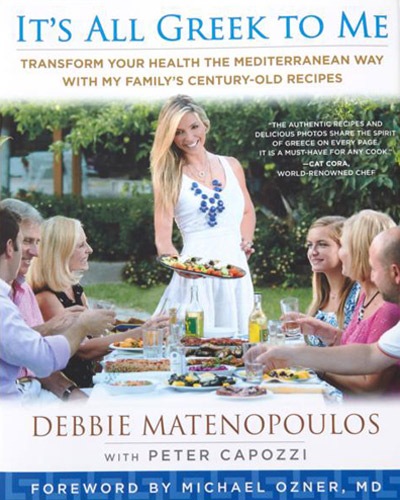
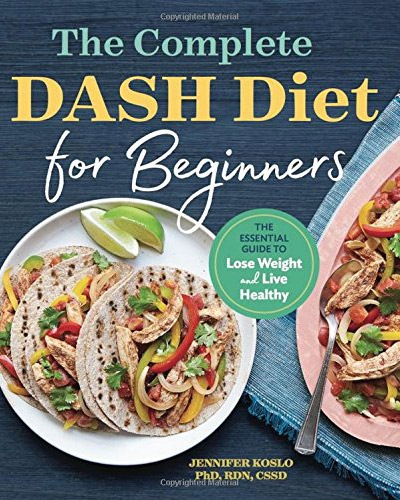
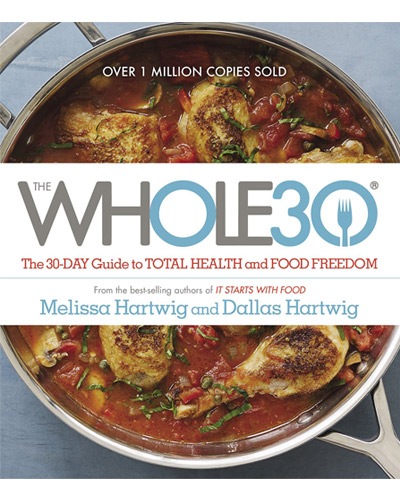

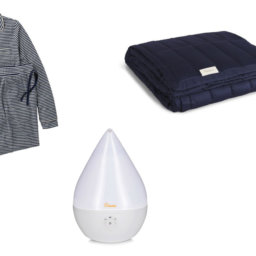
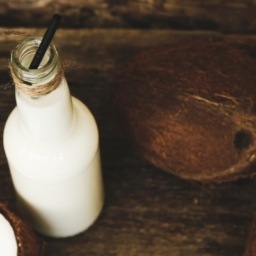



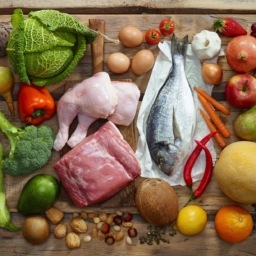
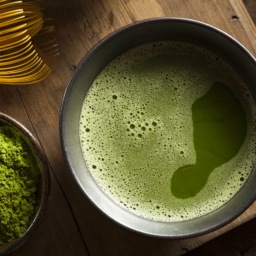

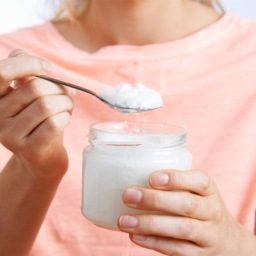
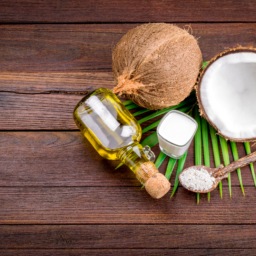
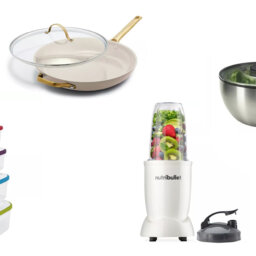
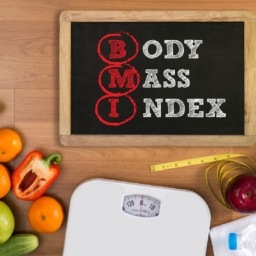
So far, the diet that most of the people I know worked well for them is the ketogenic diet.